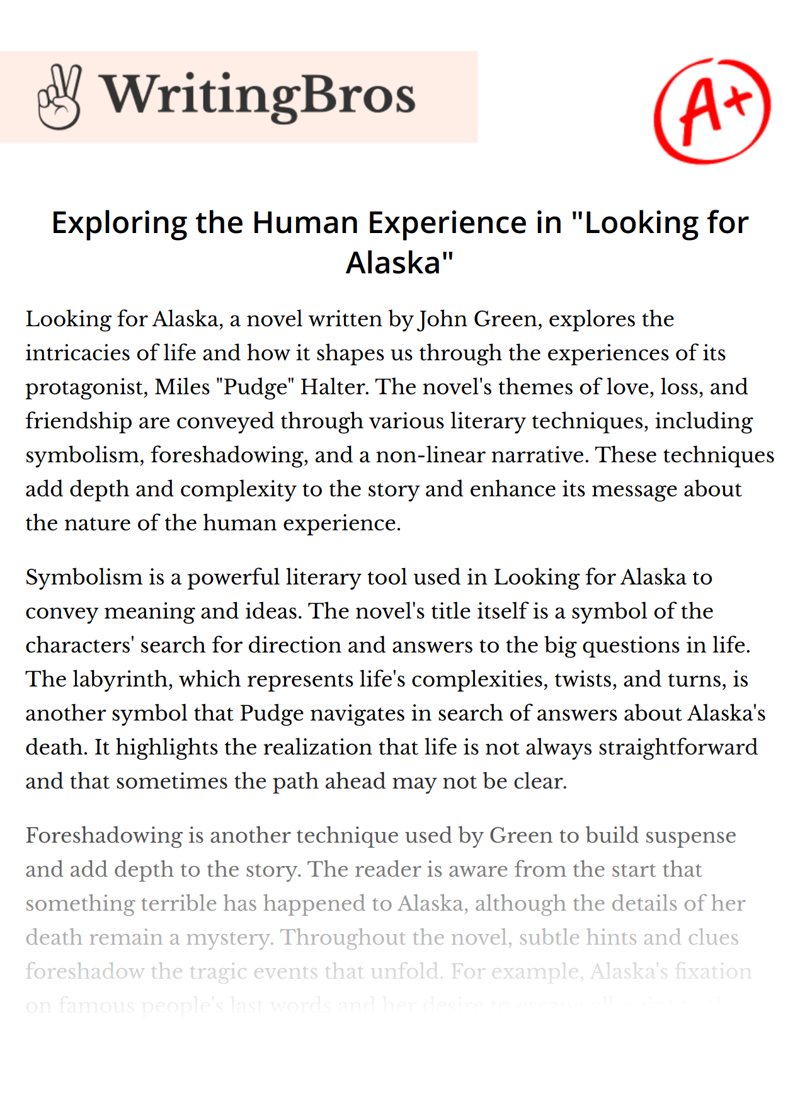Exploring the Human Experience in "Looking for Alaska"

Looking for Alaska, a novel written by John Green, explores the intricacies of life and how it shapes us through the experiences of its protagonist, Miles "Pudge" Halter. The novel's themes of love, loss, and friendship are conveyed through various literary techniques, including symbolism, foreshadowing, and a non-linear narrative. These techniques add depth and complexity to the story and enhance its message about the nature of the human experience.
Symbolism is a powerful literary tool used in Looking for Alaska to convey meaning and ideas. The novel's title itself is a symbol of the characters' search for direction and answers to the big questions in life. The labyrinth, which represents life's complexities, twists, and turns, is another symbol that Pudge navigates in search of answers about Alaska's death. It highlights the realization that life is not always straightforward and that sometimes the path ahead may not be clear.
Foreshadowing is another technique used by Green to build suspense and add depth to the story. The reader is aware from the start that something terrible has happened to Alaska, although the details of her death remain a mystery. Throughout the novel, subtle hints and clues foreshadow the tragic events that unfold. For example, Alaska's fixation on famous people's last words and her desire to escape all point to the darkness beneath her seemingly carefree exterior.
The non-linear narrative structure employed by Green adds a layer of complexity to the story. The novel is divided into two parts, Before and After, with each section alternating between the past and present. This structure allows the reader to experience the events leading up to Alaska's death and the aftermath through Pudge's reflections and memories. It also highlights the impact of past experiences on the present and how they shape who we are.
Looking for Alaska is a story about the human experience and the search for purpose and meaning. Through Pudge's journey, we see how love, loss, and friendship shape our lives and the people we become. The novel's literary techniques enhance its message and create a deeper understanding of its themes.
In conclusion, John Green's Looking for Alaska is a thought-provoking novel that explores the complexities of growing up and the human experience. The novel's use of literary techniques such as symbolism, foreshadowing, and a non-linear narrative adds depth and complexity to the story, highlighting the importance of living life to the fullest and cherishing the moments we have with those we love.
Cite this Essay
To export a reference to this article please select a referencing style below

